It’s really difficult to pick a number of things you must see in Prague. This is a fairly arbitrary list. There are many corners in this beautiful old city where you could spend a day or more just ‘poking about’. Here then are our ten for a ‘Starter List’. It is worthy of its place on the UNESCO World Heritage List.
Wenceslas Square (Václavské námestí ) & National Museum
Most children who had some sort of Sunday school upbringing, would have sung the Christmas carol ‘Good King Wenceslas’. This is his Square, with a huge bronze statue of him on a horse facing down the length. While King Wenceslas was a real person, he was not actually a king. He was the Duke of Bohemia and well known for his piety. After his early death as a martyr in the early 10th Century, the Pope gave him the status of a king. His statue has overseen the Square for a hundred years and is a popular meeting place for Prague residents.
The Square is the place to meet (about half way along) for popular free walking tours. A number of companies offer these. The tour is free, but the guides know their stuff and they will accept a tip for their hard work.
If you’re interested in the slightly macabre, the Square is also the site of a couple of well known self-immolations following the 1968 invasion of Czechoslovakia by Warsaw Pact armies. The sites are not obviously marked, but you can find them if you search online. Look for Jan Palach, who has a small marker in the ground in front of the National Museum, or Jan Zajíc.
Charles Bridge (Karluv Most)
We checked out quite a few of the twenty bridges along the Vltava River in the city area. Each bridge links the Lesser Town on the western side and the Old Town and New Town to the east. We were impressed by the beautiful Bridge of Legions (Most Legii), with its old toll booths mid way across. However, Charles Bridge is the best known and very accessible for walkers.
The oldest bridge in the city, construction on Charles Bridge began in 1357 to replace the old Judith Bridge. Judith Bridge, built between 1158 and 1172 was badly damaged by flood in 1342. The new bridge was built by King Charles IV, the second King of Bohemia, who was later crowned the first Bohemian Holy Roman Emperor. Building was only completed at the beginning of the 15th century. Check out all the statues and see if you can name them all. Or just enjoy the buskers and support the many artists selling their wares along the bridge.
Martyrs Church
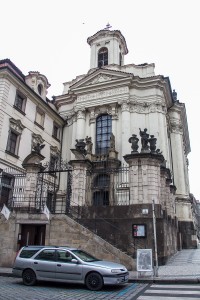 To be honest, we discovered this one by accident on our way to the river after leaving the New Town Hall. A pair of large black doors set on the street side of the building attracted our attention because it looked like a loading bay entrance. It was only when we reached the front of the building that we realised it was a church. The Orthodox Cathedral of Saints Cyril & Methodius is a fairly regular looking church. We may have admired it and moved on if we’d missed the signboard. That made sense of the simple monument in the corner of the courtyard, inscribed with a long list of names.
To be honest, we discovered this one by accident on our way to the river after leaving the New Town Hall. A pair of large black doors set on the street side of the building attracted our attention because it looked like a loading bay entrance. It was only when we reached the front of the building that we realised it was a church. The Orthodox Cathedral of Saints Cyril & Methodius is a fairly regular looking church. We may have admired it and moved on if we’d missed the signboard. That made sense of the simple monument in the corner of the courtyard, inscribed with a long list of names.
The signboard suggesting a visit to the crypt downstairs. A small inscription identified it as the National Monument to the Heroes of the Heydrich Terror, following the Heydrich assassination in May 1942. Hundreds died, including most of the population of the small town of Lidice.
This is where we discovered the church was the site of the massacre of those involved in the assassination of the SS overseer, Reinhard Heydrich. Not only is it the story of the two paratroopers, but their protectors and how they were betrayed. The wider story of events before and after the incident was also covered. If you have even a passing interest in historical events, this is a good place to visit. The Crypt, with its meaningful door, is a very moving place to visit.
Old-New and New Synagogue
The Old New Synagogue (Altneuschul) is situated in Josefov, Prague’s Jewish Town. The Synagogue is Europe’s oldest active synagogue and the oldest surviving medieval synagogue with a twin-nave design. It’s been the main synagogue of the Prague Jewish community for more than 700 years. Opened in 1270 it is considered to be one of the most valuable Jewish historical buildings in Europe. It is the oldest European synagogue still serving its purpose and one of the oldest ones in the world.
Visitors are welcome. Purchase tickets from the office opposite the side entrance of the synagogue. Men are required to cover their heads, a small paper cap is provided. Photographs are not allowed. However, visitors are encouraged sit and enjoy the beauty of this small and peaceful place of worship.
The Jerusalem Synagogue, dedicated in 1906, is an interesting example of Art Nouveau in a Moorish style This makes it quite different from the Old-New Synagogue. Located in Jeruzalémská (Jerusalem St), opposite the main railway station, it’s also open for visitors. However, the opening hours are more restricted than the Old-New Synagogue.
New Town Hall
We learnt a new word when we visited the New Town Hall on Saturday morning for the local craft market. Defenestration – the act of tossing someone or something out a window. The word was first used following an incident in Prague in 1618, when two Imperial governors and their secretary were tossed from Prague Castle.
It wasn’t the first time this had happened, though. In 1419, seven town officials were thrown from the New Town Hall, precipitating the Hussite Revolution. There’s a statue of reformer Jan Hus, in the Old Town Square.
The Old Town Square (Staromestské námestí )
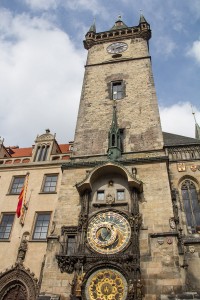 The Old Town Square is definitely the centre of the city. There’s a vibrancy about the place that encourages people to sit and enjoy, or just wander, enjoying the beautiful buildings. The churches date from medieval times. St Nicholas church (Chrám Svatého Mikuláše) and Church of Our Lady before Týn dominate the Square. The latter is a Gothic church which is the burial place of such luminaries as Danish astronomer Tycho Brahe.
The Old Town Square is definitely the centre of the city. There’s a vibrancy about the place that encourages people to sit and enjoy, or just wander, enjoying the beautiful buildings. The churches date from medieval times. St Nicholas church (Chrám Svatého Mikuláše) and Church of Our Lady before Týn dominate the Square. The latter is a Gothic church which is the burial place of such luminaries as Danish astronomer Tycho Brahe.
Take no notice of anyone who says you shouldn’t bother joining the hordes of tourists standing waiting round the Old Town Hall. The twelve disciples to do their rounds every hour, on the hour, at the Astrological Clock in the Tower. If you can get a good spot and it’s not crowded, it’s worth the effort.
Stop for a bite to eat on the Square side of the Town Hall, as you enjoy the buskers in the square. Some of them (OK, most) are really good, it was a pleasure to drop a little something in their pot.
Prague Castle and St Vitus Cathedral
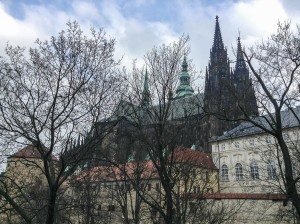 We approached the Castle and Cathedral complex from the northern entrance, walking past the Royal Gardens of the Prague Castle. These gardens date from the mid 16th Century and are open to visitors for an entry fee. Other entrances are from the East, up the Old Castle Steps through the Black Tower or from the West via the New Castle Steps. Prague Castle is connected to the Cathedral by a covered walk giving the royals easy access to their seats. The castle is open during the daytime.
We approached the Castle and Cathedral complex from the northern entrance, walking past the Royal Gardens of the Prague Castle. These gardens date from the mid 16th Century and are open to visitors for an entry fee. Other entrances are from the East, up the Old Castle Steps through the Black Tower or from the West via the New Castle Steps. Prague Castle is connected to the Cathedral by a covered walk giving the royals easy access to their seats. The castle is open during the daytime.
The Presidential Palace is part of the complex as well, as are a number of other religious buildings and churches. Allow plenty of time for wandering and identifying some of the special details.
The Cathedral, known formally as The Metropolitan Cathedral of Saints Vitus, Wenceslaus and Adalbert, is a Catholic Cathedral. It is built in the Gothic style and was commissioned in 1344. There are many beautiful features, including the beautiful mosaic over the south entrance and the impressive set of four Renaissance bells in the tower. This part of the city on the opposite side of the river from the Old Town and New Town is known as Menší Mesto pražské (Lesser Town of Prague).
Riegrovy sady (Rieger Park) & the TV Tower
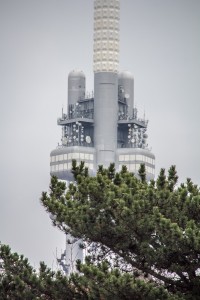
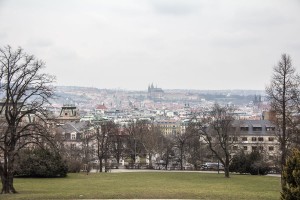 One of the best places to get a good view of the city is from the hillside of the large park the other side of the Railway station, named for Czech politician and publicist František Ladislav Rieger famous for his leadership of the early Czech nationalist movement in the latter part of the 19th Century.
One of the best places to get a good view of the city is from the hillside of the large park the other side of the Railway station, named for Czech politician and publicist František Ladislav Rieger famous for his leadership of the early Czech nationalist movement in the latter part of the 19th Century.
Apart from being a good spot to watch the general ‘goings-on’ as people come and go, it’s great for photographers. Rieger Park is a good place to get up close to the TV Tower which is apparently a national point of derision for its perceived ugliness. In a valiant attempt to improve the appearance, local sculptor David Cerný (of upside down horse fame) was tasked with placing his crawling babies on the outside. There are about 10 of them and they are big enough to be seen from a good distance away. The TV Tower and its babies is noticeable from much of Prague. Check out three more of the babies crawling in the city. Find them in a small park over the Vltava river, between the Bridge of Legions and Charles Bridge.
Kafka Museum
If you’re a fan of Franz Kafka, this is a ‘must see’. There’s evidence of this prolific writer all over the city, in little bookstores and odd corners. Kafka died of tuberculosis aged 40 in 1924. There is a small shop and an exhibition at the museum on the life and work of Prague’s most famous literary son.
Even if you’re not a huge fan, it’s still worth a visit, even if it’s only to visit the ‘two pissing men’ statues in the entrance courtyard outside. Yes, David Cerný has left his mark here as well in these two statues. They move to write out quotes from famous Prague residents with water sprays. You can SMS a message to a number on the attached plaque and they’ll spell that out too.
Municipal House (Obecní dum) & Republic Square area
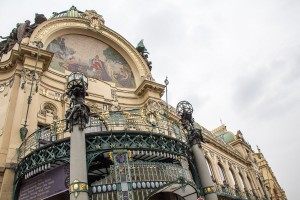 Municipal House is the home of Smetana Hall, one of the important concert venues in Prague, located in Námestí Republiky 5, next to the Powder Gate in the centre of the Old Town. The concert programme in the Smentana Hall will appeal to lovers of light classical music with Mozart, Dvorak and Strauss featuring high in the list.
Municipal House is the home of Smetana Hall, one of the important concert venues in Prague, located in Námestí Republiky 5, next to the Powder Gate in the centre of the Old Town. The concert programme in the Smentana Hall will appeal to lovers of light classical music with Mozart, Dvorak and Strauss featuring high in the list.
The Municipal House was built at the beginning of the 20th Century on the site of the palace of the King of Bohemia from the late 14th and 15th Century which was later abandoned. Built in the Prague Art Nouveau style with beautiful stained glass, metalwork, paintings and mosaic decorations in a variety of styles from Czech artists of the period, the building is open for guided tours.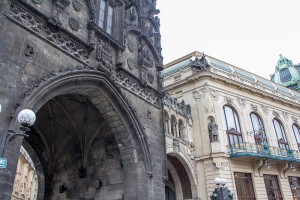
The Powder Tower or Powder Gate (Prašná brána), to the is a Gothic tower in Prague, Czech Republic just to the left of Municipal House. I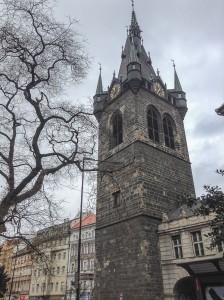 t was built in1475 on the site of one of the original city gates dating back to the 11th century. It separates the Old Town from the New Town and takes its name from its use as a place for storing gunpowder in the 18th Century.
t was built in1475 on the site of one of the original city gates dating back to the 11th century. It separates the Old Town from the New Town and takes its name from its use as a place for storing gunpowder in the 18th Century.
Just around the corner from Municipal House is Henry’s Tower (Jindrišská vež), the original bell tower of the church of St. Henry and St. Kunhuta, located in the space between Jindrišská Street and the southwest corner of Senovážné Square in Prague’s New Town. Reaching a height of 65.7 meters the tower is the tallest free-standing bell tower in Prague. The sandstone tower was built in the Gothic style in 1467.
For more about what visitors must see in Prague, visit our Prague on a budget – 9 top things to do .
Image credit©LL,RL

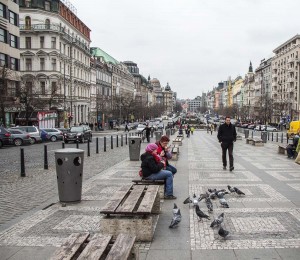
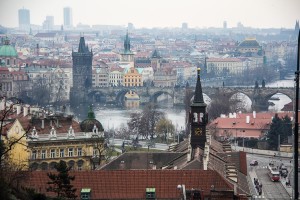
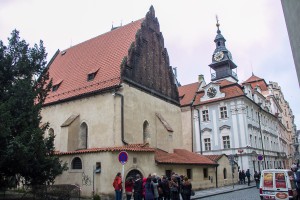
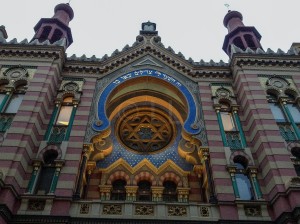
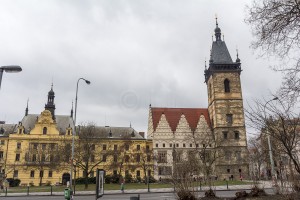






This Post Has 0 Comments